Intel Xeon Gold 6314U v. AMD EPYC 7543P Performance
Something that we are going to do that is a bit different in this review is look at more of a summary performance level, and also focus on a single competitive comparison. There is little reason to purchase the Gold 6314U if one wants a dual-socket server. Realistically, this part is specifically focused on being a 32-core single socket part going head-to-head with the AMD EPYC 7543P. The 32-core market is important because, for example, VMware vSphere is licensed with packs of 32 cores per socket.
So instead of a huge number of charts with two bars, we are simply putting our standard test suite figures on a single chart:
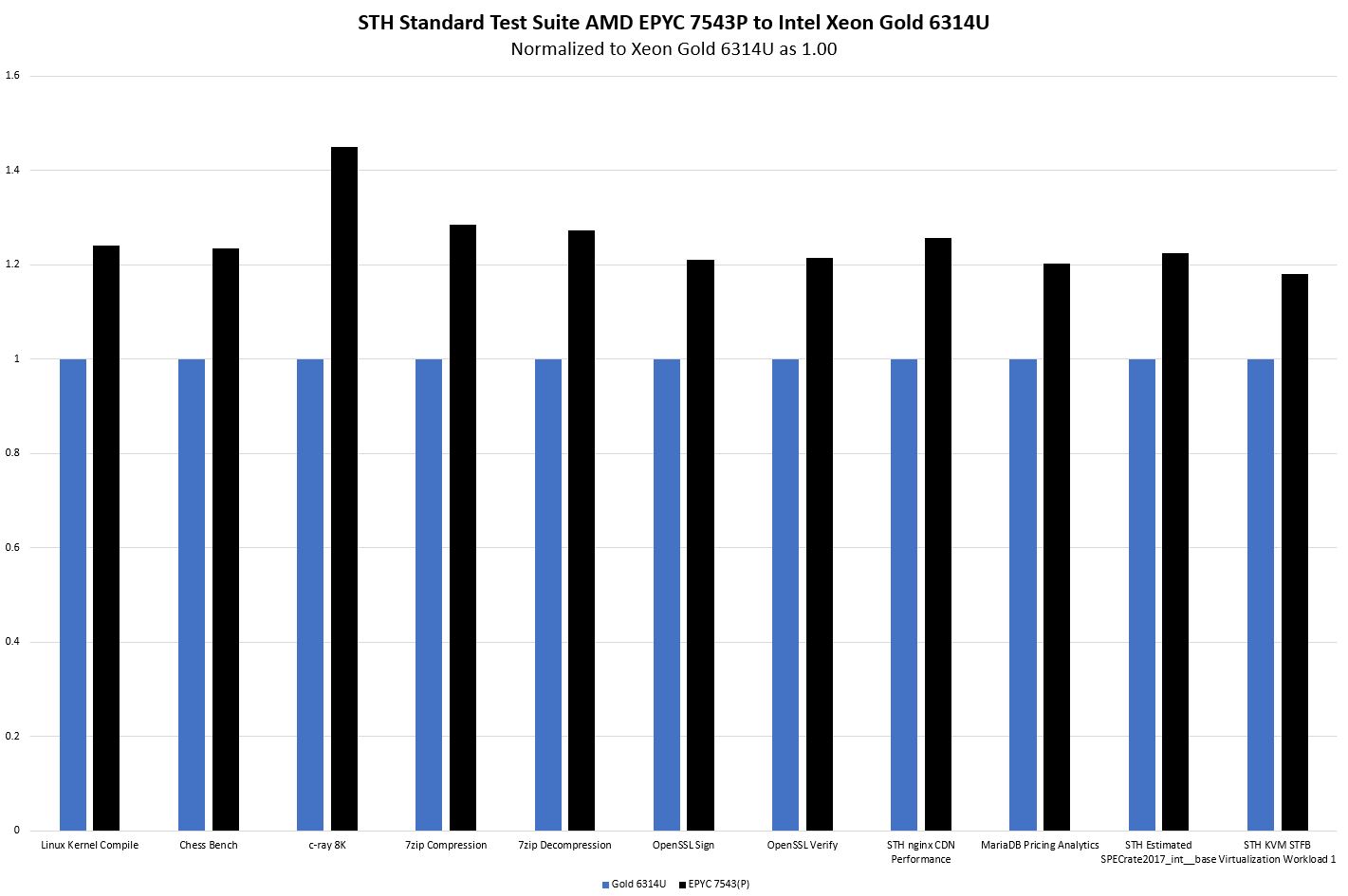
Here we get results that we would expect based on our previous reviews. When AMD has the ability to exercise its caches and higher clock speeds it does well. For its part, Intel is focusing its performance story around some of its newer instructions such as its VNNI that are not used in our test suite. Intel also has some focus on workloads that do not work as well in AMD’s heavily cache-centric architecture.
The c-ray 8K test leverages AMD’s caches and architecture very well. We often do not post results as it is a test akin to Cinebench on the Windows side that AMD uses heavily in its own marketing. This is just a category where AMD has an architectural advantage so we would not use that as the only metric to describe performance. We instead treat it as an outlier, but we include it since we started using the test before AMD re-entered the server market.
SPEC CPU2017 OEM Performance Check
Something we did want to do was to just see if the SPECrate2017_int_base numbers were in line with industry expectations. Specifically, we wanted to look at the SPEC CPU2017 numbers since that is a metric that is often used in server RFPs. While we produce “estimated” results, server vendors have teams that optimize platforms and submit reviewed results to SPEC.org for inclusion as official results. The implications are huge. Higher numbers mean a vendor can be included in RFP processes so vendors spend a lot of resources to get the best figures possible. Given that, we wanted to see if our findings aligned with the industry standard.
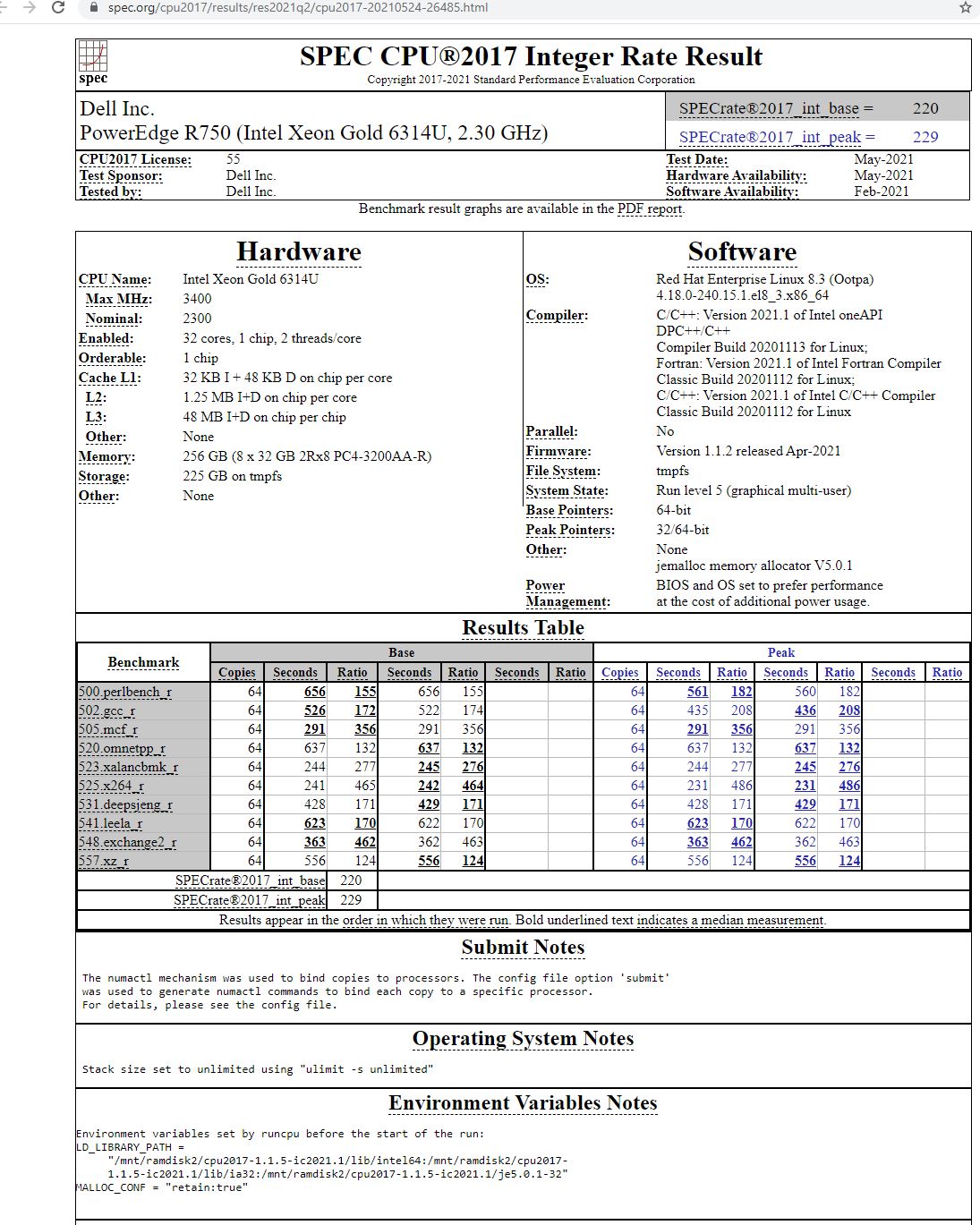
As part of the process, we are using Dell EMC’s submissions. We are doing this because Dell EMC is widely recognized as a large vendor and has a performance team dedicated to getting optimized figures. Being frank on our process, we are using Dell EMC versus HPE here because D comes before H in the alphabet. We had to pick one of the two, and so that was how we broke the tie. Still, as we saw in our recent IDC 1Q21 Server Tracker coverage, Dell is a well-known and large vendor so its numbers in this area have an industry impact.
- SPEC.org Dell EPYC 7543P Results in a PowerEdge R7515: Int, FP
- SPEC.org Dell Xeon Gold 6314U Results in a PowerEdge R750: Int, FP
Looking at those figures we have a SPECrate2017_int_base of 277 for the EPYC 7543P and 220 for the Intel Xeon Gold 6314U. That is about a 26% higher figure for the AMD parts. There is a SPECrate2017_fp_base of 266 for the EPYC 7543P and 201 for the Intel Xeon Gold 6314U. That is just over 32% higher for AMD versus Intel.
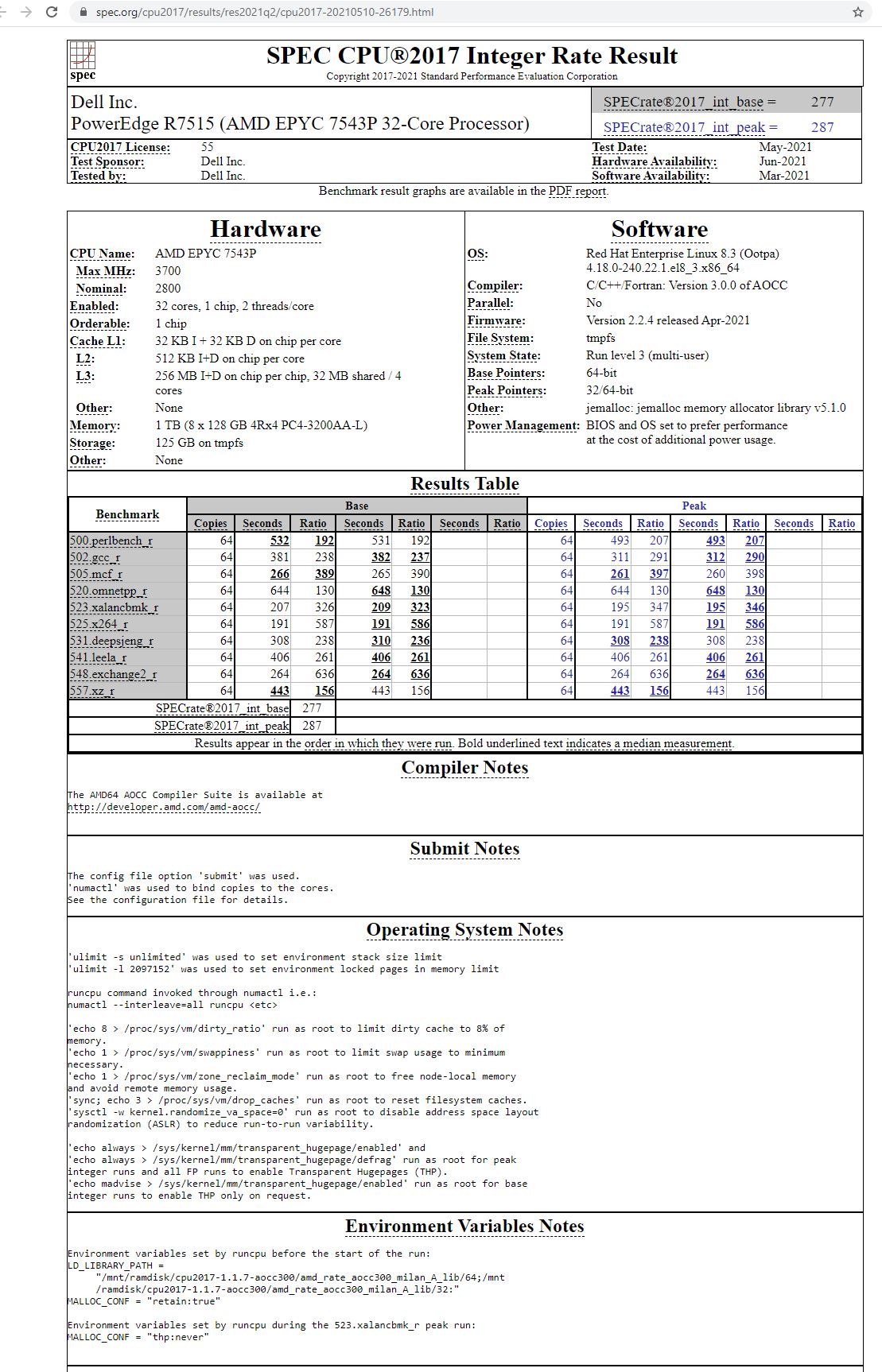
When looking at the OEM numbers, which are official numbers used in the industry to make purchasing decisions, we see that the AMD EPYC 7543P tends to be ahead of the Intel Xeon Gold 6314U by 25-33%. We saw closer to a 22% uplift on our unofficial result, but still, we feel that this, at minimum, was a third (or fourth?) party validation of the trend we saw. If anything, despite the fact that we are seeing AMD generally perform better in our testing, perhaps this means that our standard test suite actually favors Intel a bit due to the fact that Dell had a more extreme delta between AMD and Intel on these parts. That is something we will look into as we tool for 2022’s releases.
Next, let us discuss some of the implications.
Intel Xeon Gold 6314U v. AMD EPYC 7543P Market Analysis
In our standard CPU review format, we discuss market analysis generally looking at Intel v. Intel and Intel v. AMD (or AMD v. AMD) in these reviews. We felt this is a case where things are quite a bit different. Our original title of the piece was simply the Intel Xeon gold 6314U review. We quickly realized that this is basically a market of two CPUs. As a result, the review and this section morphed into a comparison between the two 32-core single-socket-only options.
For its part, the Intel Xeon Platinum 8351N has higher clock speeds and four more cores for a $427 premium. If one wanted a faster single-socket Xeon, that may be the better option so the Gold 6314U is more for those looking to hit 32 cores for licensing purposes.

On the AMD side, there is a wider range of single-socket-only SKUs. While Intel ranges from 24-36 cores, AMD ranges from 16-64 cores with its “P” SKUs.

Both companies have dual-socket-capable parts outside of the single-socket-only parts, but we are going to use this feature as a focus to constrain our comparison set.
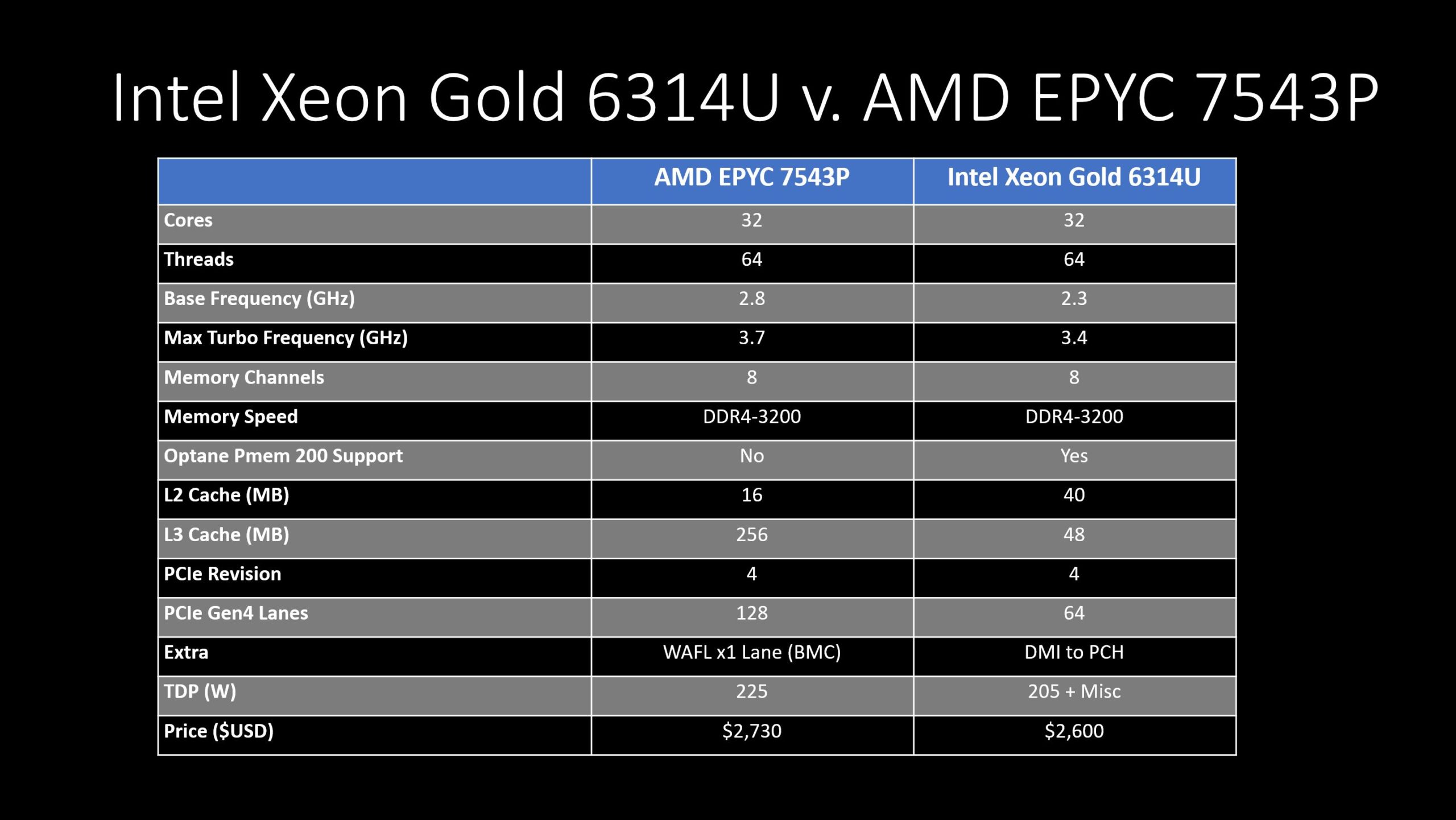
Overall, Intel can claim a lower price by almost 5%. AMD can, however, claim that it has 20-33% better performance as well as additional PCIe Gen4 connectivity. Intel has its newer instructions and Optane PMem 200 support. Still, for the majority of buyers, it seems fairly clear that at list price, AMD has a better value proposition here.
With that said, this is not an insurmountable delta. If one wants a 32 core processor, in previous generations Intel could only offer 28 so it simply could not meet that specification. The same could have been said in the previous generation with PCIe Gen4 or 8-channel DDR4-3200. By closing the gap in terms of capabilities, Intel now has a clearer path to compete on pricing. It is already ~5% less expensive, but at closer to $2200 it would be very competitive on a price/ performance basis. Actual deal pricing is often different than list pricing, but in many cases, Intel now has a path to compete across most specs and then with discounting.
Final Words
It is probably obvious by now, but one of the major driving factors for doing the Intel Xeon Gold 6314U review was simply a realization of how Intel became much more competitive in this space. As the Supermicro SYS-510P-WTR Review was being completed, we realized this was a story that has not had a lot of industry focus. That makes sense since dual-socket servers are still the most popular.
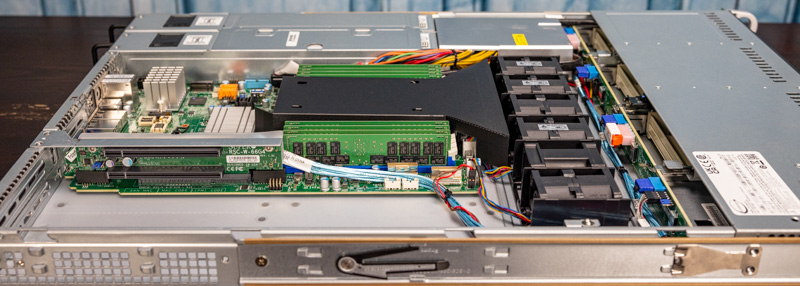
Overall, Intel made a lot of headway in this generation. At list pricing, we would probably recommend that the majority of our readers look at the AMD EPYC 7543P over the Intel Xeon Gold 6314U. AMD has more performance with the same core count, thus more performance per core. In other segments, having an AMD EPYC platform means more PCIe Gen4 connectivity. Still, there are many single-socket servers that have 0-1 expansion cards and 1-4 drives where Intel is now very competitive.
There is a lot more that goes into server decisions, but we at least wanted to frame the Intel Xeon Gold 6314U v. AMD EPYC 7543P discussion so that our readers can work through the differences. Hopefully, this format helped.




hi patrick, love STH, thanks for being a unbiased and knowledgeable site for the server space!
any chance you could do a “the best VMware CPU 2021: Xeon 8358 vs EPYC 75F3” piece? those look like the most promising SKUs for “max 32 Cores, no budget because software licensing dwarfs hardware cost”
Very nice and honest article. Looks like AMD is the king here unless user needs some specialty provided only by Intel: optane memory or newer ISA (AVX512 & Co.). On the other hand it is also nice how Intel is attempting to be more and more competitive. Competition is clearly heating up. Good!
Hi STH,
if it’s of any interest to other readers than me, could you please make the comparison of 16 core CPUs, maybe intel, amd, arm64? I’m mostly interested in network forwarding performance without and without firewall :)
With the 7543P leading so clearly, I would’ve lovede to see 7443P vs this 6314U. Is really close but the perf/price for the AMD part is much much better. Intel is still not really competitive.
R7515 with 7443P (Base 212 and 214):
https://www.spec.org/cpu2017/results/res2021q2/cpu2017-20210510-26237.html
https://www.spec.org/cpu2017/results/res2021q2/cpu2017-20210510-26235.html
Hi John,
Thanks for this review.
I second hrvoje’s request!
EPYC 7453 is likely to have better performance and MUCH better price/performance and can be used in 1P and 2P servabout?
I wonder why it wasn’t included in this analysis above.
We will have more coming. Chip availability is not as great as it has been in previous generations.
so where does this leave me with my 2S 2011 v3 2696 v3 with 36 cores/72threads?
I think it would be interesting to see the Epyc 7302p in the charts as well. Seeing the performance uplift from Zen 2 > Zen 3 and comparing both architectures against identical core count Intel would be nice.